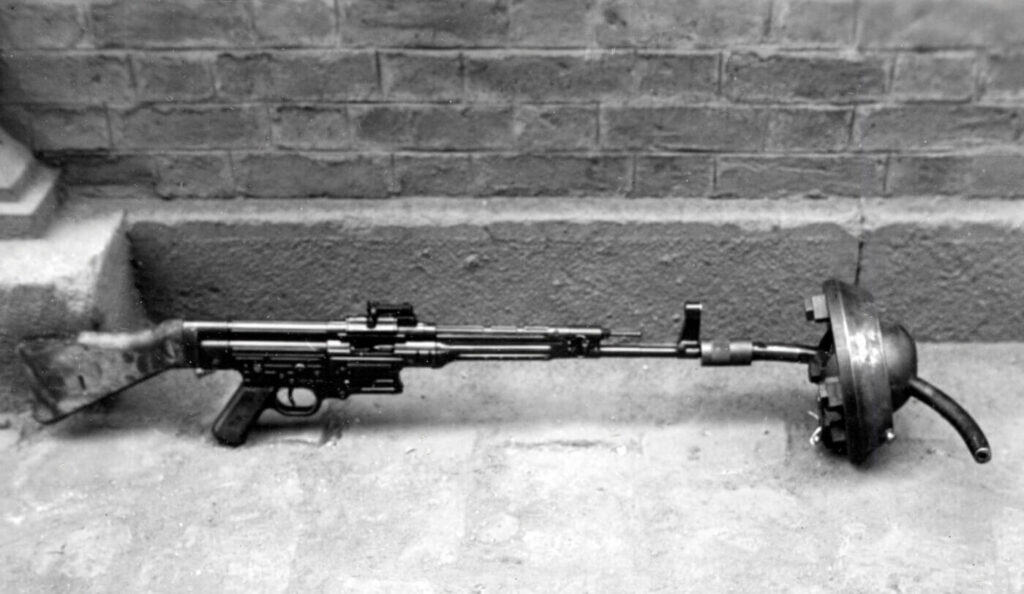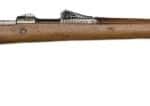
Introduction
The G3 rifle, a masterpiece of engineering and tactical versatility, stands as one of the most enduring and widely used battle rifles of the 20th and 21st centuries. Designed for durability, reliability, and firepower, the G3 has equipped military and law enforcement agencies across the world, leaving a lasting imprint on modern warfare.
Origins and Development of the G3 Rifle
The origins of the G3 rifle can be traced back to late World War II Germany, when German engineers at Mauser sought to develop an advanced infantry rifle utilizing a roller-delayed blowback system. This resulted in the StG 45(M) prototype, which differed significantly from the more famous StG 44—the latter being a gas-operated assault rifle chambered in 7.92×33mm Kurz.
After the war, Ludwig Vorgrimler and other Mauser engineers relocated to Spain, where they continued developing the concept at CETME (Centro de Estudios Técnicos de Materiales Especiales). This work resulted in the CETME Modelo A and B rifles, chambered initially for the 7.92×41mm CETME cartridge, which was designed to reduce recoil while maintaining effective range. However, with NATO standardization in progress, West Germany required a battle rifle chambered in 7.62×51mm NATO, leading to modifications that eventually produced the CETME Modelo C.
In the 1950s, West Germany sought to adopt a new standard rifle. While the U.S. M14, Belgian FN FAL, and Swiss SIG SG 510 were evaluated, they either proved too expensive or did not fully meet German requirements. The CETME rifle, however, offered a simpler, more cost-effective design with excellent durability. The German Bundeswehr officially adopted it as the "G3" (Gewehr 3) in 1959, with Heckler & Koch (H&K) as the primary manufacturer.
Manufacturing and Global Production
The G3 rifle was primarily manufactured by Heckler & Koch (H&K), but production was widely licensed, allowing several countries to manufacture their own variants. Major producers included:
- Hellenic Arms Industry (Greece) – G3A3 and G3A4 production
- FFV (Sweden) – Modified as the Ak 4
- Pakistan Ordnance Factories (Pakistan) – Local production of standard and modernized variants
- Iran Defense Industries Organization – Produced for use by the Islamic Republic of Iran Army
- Turkey (MKEK) – Long-time producer and user of the G3
- Portugal (FBP) – G3A3 adoption for the Portuguese Armed Forces
It is estimated that over 7 million G3 rifles have been produced worldwide, making it one of the most widely manufactured battle rifles in history. The simplicity of its design, reliance on stamped steel components, and ease of maintenance made it particularly attractive for mass production.
Technical Specifications and Performance
Roller-Delayed Blowback System
The G3's defining feature is its roller-delayed blowback action, a system that ensures reliability without the need for complex gas operation. Unlike gas-piston rifles such as the M14 or AK-47, the G3 operates using two rollers inside the bolt carrier, which slow the bolt's rearward motion upon firing. This provides excellent durability, consistent cycling, and minimal sensitivity to environmental conditions such as sand, mud, and extreme temperatures.
Cartridge and Ballistics
The G3 is chambered in 7.62×51mm NATO, a cartridge known for high muzzle velocity, flat trajectory, and superior stopping power. Key performance metrics include:
- Muzzle velocity: 800–820 m/s (2,625–2,690 ft/s)
- Effective range: 500–600 meters with iron sights
- Maximum range: 800+ meters with optics
- Rate of fire: 500–600 rounds per minute (RPM)
- Magazine capacity: 20-round detachable box magazine (steel or aluminum construction)
Compared to modern 5.56mm rifles such as the M16 or G36, the G3 offers greater range and penetration, making it ideal for open terrain and long-distance engagements. However, its increased recoil and heavier weight (4.4 kg unloaded) make it less controllable in automatic fire.
Variants and Specialized Models
The G3 rifle family has undergone multiple upgrades and modifications to suit various military and law enforcement roles. Some of the most notable variants include:
- G3A3 – Standard fixed-stock version with a wide foregrip
- G3A4 – Folding-stock variant for airborne and special operations units
- G3SG1 – Sniper/marksman variant with an adjustable stock and scope mount
- PSG-1 – High-precision sniper rifle derived from the G3 platform
- HK91 – Civilian semi-automatic version
- HK11/HK21 – Light machine gun adaptations with belt-fed capability
Comparisons to Other Rifles
G3 vs. FN FAL
Both rifles were dominant 7.62×51mm NATO battle rifles adopted by NATO countries, with the FN FAL widely used in the West and the G3 favored by Germany and many non-aligned nations.
- FAL features a gas-operated system, making it slightly softer shooting than the roller-delayed G3.
- G3 is generally more durable in harsh conditions and easier to maintain.
- FN FAL has superior ergonomics, while the G3 has a sharper recoil impulse due to its operating system.
G3 vs. AK-47
The AK-47 (7.62×39mm) is the most widely used assault rifle globally, offering superior controllability and lighter weight compared to the G3.
- AK-47 is designed for close-to-mid-range combat, whereas the G3 excels at longer engagements.
- G3 has better accuracy and penetration but is heavier and has higher recoil.
- AK-47's gas-piston system is smoother, while the G3’s roller-delayed blowback ensures reliability without gas fouling.
Legacy and Continued Use
Despite its official replacement in the Bundeswehr by the HK G36, the G3 continues to see widespread use today. Many special forces, reserve units, and paramilitary groups still employ the G3 due to its firepower, durability, and reliability.
Countries such as Pakistan, Iran, Greece, Turkey, and Nigeria still produce and use modernized versions, sometimes incorporating rail systems, optics, and polymer furniture to bring the rifle into the 21st century.
Conclusion
The G3 rifle remains a legend in military firearms history, representing a perfect balance of power, durability, and simplicity. Its roller-delayed blowback system, robust construction, and battlefield effectiveness have solidified its place as one of the most successful battle rifles of all time. Even in an age of modular, lightweight, and high-tech assault rifles, the G3’s reputation for reliability and sheer stopping power ensures its continued relevance on the battlefield and beyond.
For those interested in historical firearms, military technology, or tactical applications, the G3 stands as a true icon of 20th-century engineering. Its continued service around the world is a testament to Heckler & Koch’s design philosophy of function over form, durability over complexity, and firepower over compromise.
Read more here:
The HK Pro Forums have a discussion group about Long Guns that often covers the G3 Rifle.
If you know of any forums or sites that should be referenced on this listing, please let us know here.








